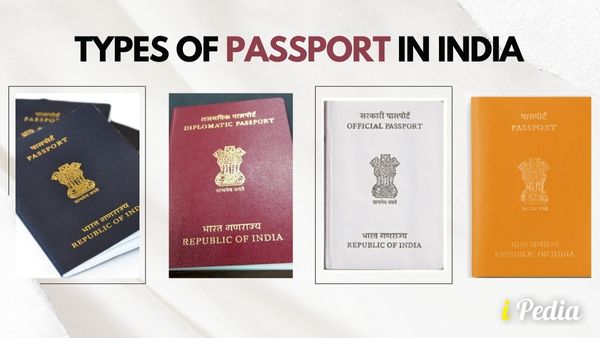Ordinary-P-Type of Passport
The common passport, also known as passport type P, is given to regular Indian nationals who intend to travel abroad for work or pleasure. These navy blue passports are mostly used for vacations, business travels, educational excursions, and other personal travel. It follows that the majority of Indians possess this common or all-purpose passport.
The most popular type of passport given to the general people for pleasure or business travel is blue. Its main objective is to aid foreign authorities in differentiating between common citizens and official representatives of the government. The identification of the traveler’s official status is made easier by the blue colour.
These passports feature the traveler’s name, birth date, and photograph in addition to other essential identity information needed for immigration. It has a modern, straightforward design. All regular citizens who are travelling abroad for either business or pleasure are issued this passport.
Official or Diplomatic Passport
As the name implies, this passport is given to diplomats and government employees who are going abroad to conduct official business. This indicates that the only people who can obtain official passports are government officials. They have a white cover on them.
The maroon passport is reserved for diplomats and senior government officials. There should be no confusion between the white and the maroon passport. The latter is required of every government official who arranges a travel abroad on behalf of the nation. However, maroon is reserved for employees of the Indian Police Service and the Indian Administrative Services (IAS).
Travel arrangements abroad are simpler for those with maroon passports. Additionally, they receive different treatment than other passport holders. Maroon passport holders get excellent care in addition to a variety of benefits. One is that they don’t need a visa to travel abroad. No of how long they want to spend abroad, they won’t be questioned about their visa status. Additionally, these officials pass through immigration far more quickly than individuals using regular passports.
White Passport
White is regarded as the most potent passport out of all the others. Only employees of the Indian government are eligible for the white passports. To make it simpler for immigration and customs officers to recognize government personnel and treat them appropriately, it is given to the bearer who is travelling overseas on business.
Orange Passports
In 2018, we noticed a significant modification to the passports provided to Indian nationals. At that time, the government ceased printing the address page in Indian passports and announced the introduction of orange-colored passports. Compared to the passports we have been using for the previous few years, the new passport is completely different in appearance. The updated passports have a modern style and clear pages, and they look very great.
Citizens of the ECR are required by the Ministry of External Affairs to have a passport with the orange stamp attached. To improve safety for citizens with limited education, the stamp-based passports was introduced. In essence, these passports are made to guard against being taken advantage of while looking for work abroad. In addition, the ECR verification and emigration process will be sped considerably by this transition. Orange passports have lately been introduced, according to the government.
It is intended to make it easier for immigration and foreign personnel to locate people who have not completed more than a 10th-grade education. This passport is missing its last page. along with the traveler’s permanent address and father’s name. Travelers who do not meet the requirements come under the ECR category and are qualified for the orange passports with a special stamp. The holders of orange passports must adhere to a strict immigration standard.
Also Read – Types Of Road Lines That You Should Know



